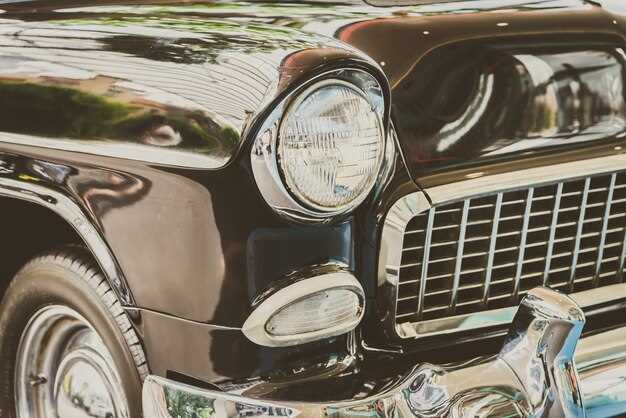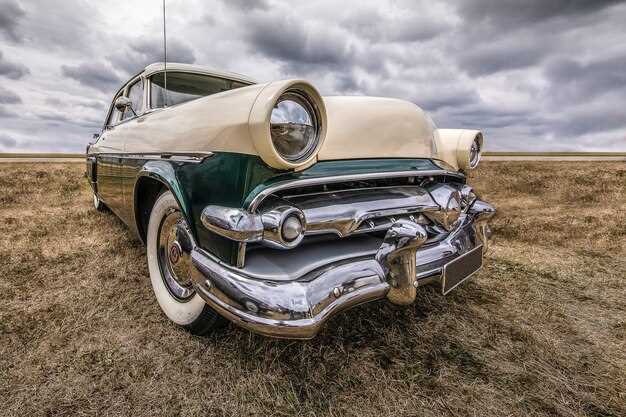
Restoring a classic pickup is not just a project; it’s an adventure that combines nostalgia with craftsmanship. Whether you’re aiming to bring back the original glory of a vintage truck or modernize it for today’s roads, the journey requires careful planning and execution. In this article, we will explore essential tips and insights that will guide you through the various stages of restoration, from finding the right vehicle to the finishing touches that make your pickup truly shine.
First and foremost, selecting the right pickup truck is crucial. Consider the condition, rarity, and availability of parts for the model you choose. Look for a vehicle that resonates with you, as passion for your project will keep you motivated through the challenges. Once you have picked your classic pickup, a thorough assessment of its current state is necessary to develop a clear restoration plan.
Throughout the restoration process, staying organized and having a detailed timeline is key to success. Focus on essential areas such as the engine, bodywork, and interior. Each aspect demands attention to detail, but understanding the intricate balance between preserving originality and implementing modern upgrades will help you create a unique masterpiece. With patience and persistence, your classic pickup can transform from an untouched relic into a personalized piece of automotive art.
Assessing the Condition of Your Pickup Before Starting Restoration

Before diving into the restoration of your classic pickup, it’s crucial to assess its condition comprehensively. This initial evaluation will help you understand what restoration work is necessary and whether the project is feasible within your budget and timeline.
Start by examining the body for rust, dents, and any signs of previous repairs. Look for rust in common areas such as the wheel wells, cab corners, and undercarriage. Use a magnet to check for body filler, which can indicate poorly executed body repairs. Note the condition of the paint and any existing corrosion, as these factors will influence your restoration approach.
Next, evaluate the mechanical components. Check the engine for signs of leaks, corrosion, or damage. Assess the state of the transmission, brakes, and suspension systems. Conduct a thorough inspection of the fuel system and electrical components, including wiring and battery condition. Making a list of any immediate repairs needed will aid in prioritizing tasks.
Inspect the interior for wear and tear. Look at the seats, dashboard, and any electronic systems. Take note of missing parts and accessories that might need replacement. Interior restoration can be just as important as mechanical work, so a clear inventory is essential.
Additionally, consider the frame’s integrity. A compromised frame can affect safety and overall performance. Check for cracks, bends, or severe rusting that can weaken the structure. If severe damage is present, it might require professional evaluation or even replacement, so be prepared for potential additional costs.
Lastly, research specific issues commonly associated with your particular make and model. Many classic pickups have known weak points that can complicate restoration. Connecting with classic car communities or visiting forums can provide valuable insights and shared experiences from other restorers.
This thorough assessment will serve as your foundation for the restoration project. By understanding your pickup’s condition, you can create a realistic restoration plan that aligns with your skills, resources, and desired outcome.
Choosing the Right Parts and Materials for Authentic Restoration
When restoring a classic pickup, selecting the right parts and materials is crucial for achieving an authentic finish. Begin by sourcing original or OEM (Original Equipment Manufacturer) parts whenever possible. These components are designed to match the specifications of your vehicle, ensuring consistency in fit and performance. Look for reputable suppliers that specialize in classic car parts to increase the likelihood of finding authentic replacements.
Another key aspect is to ensure that the materials used reflect the period of the vehicle. For instance, if your pickup originally featured a specific type of upholstery or paint, aim to replicate those materials as closely as possible. This may involve researching manufacturers that produce vintage fabrics or paints with the same color codes and finishes that were available at the time of your truck’s production.
Consider the sourcing of aftermarket parts with caution. Not all aftermarket components provide the same level of quality or authenticity. While they may be more readily available and often less expensive, they can compromise the car’s integrity. Comparing customer reviews and seeking advice from restoration experts can help in making informed choices.
Don’t overlook the importance of fasteners and small components. Authentic restoration pays attention to these details, as they can greatly affect the overall look and function of the vehicle. Consulting restoration guides specific to your pickup model will provide insights on the types and finishes of fasteners that were originally used.
Additionally, prioritize parts that reflect the vehicle’s history. If your pickup has undergone modifications in the past, deciding whether to revert to its original specifications or maintain its current state is essential. Documenting the vehicle’s history can guide your decisions, making sure the restoration is in line with its narrative.
Ultimately, the right parts and materials not only enhance the aesthetics of your classic pickup but also contribute to its longevity and market value. Investing time and effort in research and sourcing will pay off in the long run, allowing you to enjoy a vehicle that is both functional and true to its heritage.
Techniques for Maintaining Original Aesthetic While Upgrading Performances

When restoring a classic pickup, balancing the need for performance upgrades with the desire to retain the original aesthetic is essential. One effective technique is to opt for modern upgrades that closely mimic the original parts in appearance. For example, replace old suspension components with aftermarket versions that are designed to look similar to the factory equipment while providing modern performance enhancements.
Retaining the original color scheme and materials can also help preserve the classic look. Using modern finishes that replicate the original paint and materials will enhance durability without sacrificing authenticity. Additionally, sourcing reproduction parts from reputable manufacturers ensures that visual fidelity is maintained in components like trim, badges, and interiors.
Incorporating discreet performance enhancements is another strategy. Upgrades such as high-efficiency fuel injectors, improved ignition systems, or performance exhaust can be installed without altering the vehicle’s outward appearance. Choosing aftermarket wheels that resemble the original design but offer better performance is another effective method to improve handling without compromising aesthetic integrity.
Utilizing technology that remains invisible enhances performance while keeping the classic visuals intact. For instance, upgrading to a modern braking system with hidden calipers maintains the original wheel appearance but significantly improves stopping power. Similarly, integrating updated electrical systems, such as LED lighting, maintains the same visual style yet offers better visibility and energy efficiency.
Lastly, consulting with restoration professionals who specialize in classic vehicles can provide insights into how to balance aesthetic fidelity with performance requirements. Their expertise can guide decisions about which upgrades can be made without detracting from the vehicle’s vintage charm, ensuring that the end result is both visually appealing and functionally superior.

